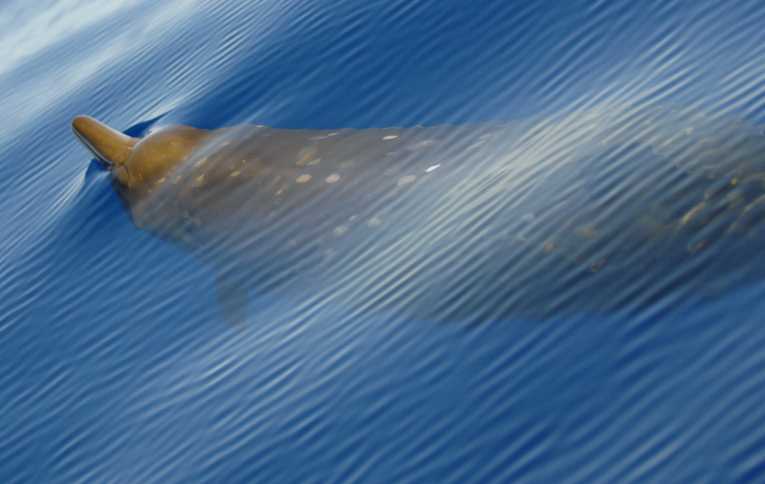Innovative research aimed at uncovering the deep-sea exploits of one of the least-understood groups of marine mammals - the beaked whale - may give conservationists a leap forward in understanding these enigmatic creatures - and how they are being affected by naval sonar.
The study, published in today's issue of PLoS ONE, made use of acoustic surveying to track both the deep-layers of prey-rich waters, and the presence of hunting beaked whales. The information gained may help to avoid the terrible consequences of mass whale strandings. These often seem to accompany major naval exercises - and have been linked to the use of naval sonar.
Beaked whales are one of the most poorly understood groups of whales, because of their preference for the deep waters of the ocean. These astonishing animals regularly dive to 1,600 feet, and can reach down down to 6,200 feet. There they catch deep-sea squid and bottom-dwelling fish, sucking them into their gullets with a throat that is specially adapted for maximum suction
They spend much of their time away from shore, over the deepest trenches, on long dives that can last up to an hour or more. This behavior, combined with their low numbers, make them a rarely observed animal, one that scientists are only just getting to grips with. But the research group from Duke University, Woods Hole, have teamed up with the Naval Undersea Warfare Center to pin down the details of their foraging, off the east of the Bahamas.
Here, adjacent to Andross Island, lies a deep oceanic trench known as the Tongue of the Ocean. It is a favored habitat for Blaineville's beaked whales, and also benefits from being home to a long array of hydrophones on the sea bottom. These have been used for years to monitor the communication clicks from various whale species. For this study, the team were able to make use of the hydrophones to identify when the beaked whales were foraging.
This information was combined with a month-long surveying of so-called 'deep scattering layers' from a boat equipped with fishery acoustic gear. Those layers are known to reflect zones that are rich in the squid, and other prey that beaked whales are partial to. Together, these two sets of information allowed a mapping of the timing and depths of the Blaineville's beaked whales hunting in this area, as they responded to shifting prey zones.
The results show that the whales preferred the western side of the Tongue of the Ocean. They also hunted equally at night or day - to be expected when they are searching for prey using their own sonar, in complete blackness. The authors hope that this and other information from their study will help the navy, based in the Bahama's, and across the world, to better time their exercises - and so cut the risks of causing deaths to these amazing deep-sea explorers.
Image Credit: NOAA. Blainville's beaked whale (Mesoplodon densirostris).










